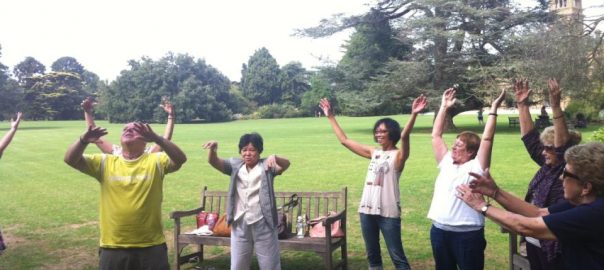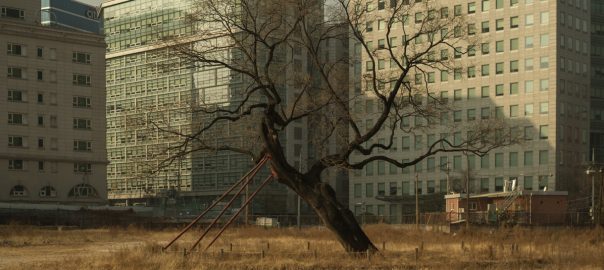The first discipline we reviewed was urban economics. As a whole, the field is strongly (although not entirely) focused on the positive benefits to individuals, firms, and societies of life in urban settlements. Edward Glaeser, a chief exponent of this view, even referred to cities as mankind’s greatest invention [1]. Economists have traditionally talked about the economic benefits of urban life to production, such as the way that proximity of people and firms enable sharing of infrastructure and resources. In recent decades, economists have also focused on the economic benefits of urban life to consumption, as proximity enables it financially viable for cities to support unique consumption opportunities, from baseball stadiums to libraries to zoos.
The major theme of all this economics literature is that proximity—the increased potential for interaction inherent in living at higher population density—has its benefits. Perhaps one of the most famous recent analyses in this vein was by Luis Bettencourt and colleagues [2], who compared lots of metrics of urban activity with population size, to see how activity scaled with city size. Economic productivity, patent generation, and innovation all scale supra-linearly with city size. Bigger cities, with presumably more potential for interaction, are better for those metrics. Aristotle famously referred to human as a social animal [3], by which he meant that our unique skill and love for interacting with one another is part of species essence. In cities, one could argue we are creating the perfect space for social interaction. Cities could therefore be seen as quintessentially human, an expression of our deep need for social interaction.
The second discipline comes from environmental health studies of the urban health penalty. This term was first coined in the study of communicable diseases and death rates in European cities in the 19th century. In England, for instance, death rates were substantially higher in cities than in the countryside. The last century, however, has seen a transformation to what one scholar called the “sanitary city” [4], where clean drinking water is piped into homes and wastewater is piped out. This transformation, along with environmental regulations on air quality, have for many urban dwellers (although certainly not all) reversed the urban health penalty: those in cities live longer on average than those in rural landscapes.
However, two major health issues are still worse in cities that in rural areas, on average. Obesity in many countries is more prevalent in cities where a lower fraction of people works active jobs, although sometimes the ability of urbanites to walk while commuting on going about their daily life can counteract this tendency toward obesity. More to the point of this essay, there is a clear trend toward an increased prevalence of some mental health disorders in cities. For instance, Sundquist and colleagues [5] studied more than 4 million adults in Sweden, finding a significant increase in the incidence of psychosis and depression among populations living at higher densities in cities than those living in more rural areas. There are multiple possible pathways by which the urban environment and its increased pace and interaction can increase stress and the prevalence of some mental disorders. Cities create a local environment with far different environmental conditions than the ones we evolved as a species to handle. Thus, in this sense, the urban environment can be shockingly inhumane, by not being in accord with our organism’s design and capacities.
This unnatural environment is now the norm for our species. Global population data suggests than 3.7 people live at population densities that exceed 800 people per square kilometers, densities at which Sundquist and colleagues [5] began to detect an urban psychological penalty. If this finding from Sweden were to apply globally (and that is a big if!), then close to half of humanity is living at urban densities that significantly increase to risk of mental health problems. This urban psychological penalty will arguably be harder to get rid of than other facets of the historical urban health penalty. Crowding and the increased interaction of cities is part of what makes cities our greatest invention, yet it is also part (although only a part) of why the urban psychological penalty exists.
The third discipline we reviewed is one that is perhaps most familiar to the Nature of Cities readers. The central idea of this literature, coming out from the ecology and health fields, is that interacting with nature has health benefits. This occurs through multiple pathways. For example, parks and open space can help encourage recreation, which can help reduce obesity. Trees can help clean and cool the air, while natural habitats can reduce the risk of flooding. Most relevant to this essay, there are a growing number of studies that show a psychological benefit of interaction with nature.
Some studies have taken an observational approach, analyzing large population datasets to show the association between nature and health. For instance, using data over time from the British Household Panel Survey, Alcock and colleagues [6] showed that those who moved from a neighborhood with less nature to one with more nature showed an increase in mental health. Recently, Cox and colleagues [7] studied individually in southern England, a dose response of nature exposure: neighborhoods with more than 20% forest cover had a 50% lower incidence of depression and 43% less stress. Similarly, a study of more than 260,000 Australians found that those with a greater green space within 1 km had lower rates of psychological distress as well as higher rates of physical activity, suggesting that recreation in greenspace may be a causal mechanism improving mental health [8]. A study in Brisbane, Australia found a dose-response effect, with visits to outdoor greenspaces of 30 minutes or more per week resulting in 7% less depression and a 9% reduction in high blood pressure [9].
These results from observation studies are also supported by available experimental studies. There is now a large number of studies that show that interaction with nature can reduce stress, whether measured through self-reporting or from levels of cortisol. One recent experiment [10] in Philadelphia randomly selected vacant lots for clean-up and (in some cases) increased greening. Neighbors near vacant lots that were greened had an improvement in self-reported mental health over vacant lots that weren’t cleaned up, with lots that were cleaned up but not green intermediate in effect. My own organization, The Nature Conservancy, is working with the University of Louisville on the Green Heart Project. This neighborhood-level, controlled experiment seeks to quantify health benefits from an increase in urban tree canopy in the intervention neighborhood, relative to the control neighborhood.
Knowledge of the dose-response curve of nature’s effect on mental health is still imperfect. Available studies are culturally biased, for example, tending to be in the U.S. and Europe. Still, given that humanity is in the midst of the fastest period of urban growth in our species history, it seems worthwhile to ask: what fraction of the world’s urbanites get enough nature now? To address this question, we examined forest cover data for 245 cities globally.
Currently, only 13% of urban dwellers live in neighborhoods with more than 20% forest cover, the amount found by Cox and colleagues that provides a protective affect against depression and stress. Despite our growing scientific knowledge of the value of nature for mental health, our urban world remains mostly gray.
Knowledge of the state of global urban forest canopy over time is spotty. In the U.S., at least, urban forest canopy seems to be in decline. Nowak and colleagues looked at urban and community areas in the United States and found an 1.0% decline in forest cover from 2009 to 2014, which amounts to an annual loss of 36 million urban trees [11]. A lot of this decline seems to be due to systematic under-investment by the public sector in tree planting and (especially) maintenance. There has been a 25% decline in per-capita spending on urban forestry by municipalities since the 1980s.
So, what can be done to change this picture, to make the urban century greener? The most important step is perhaps to recognize that nature in cities is not a mere amenity, a “nice to have” thing on par with other urban amenities. Rather, nature in cities is a way to counteract the inevitable psychological downside of increased interaction in cities. Nature in cities is a way to have our cake and eat it too, to have the benefits of an urban world while still having a more humane, more natural life. Nature for urban dwellers then seems more like an essential feature of successful urban century.
In our essay, we explore three particular policies or programs that might help with this change in mindset. One of the ideas is a Green Prescription program, as exemplified in a program in New Zealand of the same name. Doctors can write prescriptions for patients, requiring a certain period of time outdoors in a park or natural area. For every ten green prescriptions written, participants achieved 150 minutes of exercise, which was associated with a 20-30% reduction in all-cause mortality. Overall, the program has been shown to be a cost-effective way to improve public health.
Another, complementary route would be to incorporate nature into our urban form, more deeply into the fabric of our daily lives. This leads to the idea of biophilic urban design, that integrate natural elements from the building scale to the scale of neighborhoods, cities, and regions. One commonly cited example of such a strategy is Singapore, which requires new building, to at least replace 1-to-1 the nature lost at ground level with nature on roofs or walls. One remaining challenge for biophilic design is to develop examples that work in less affluent settings (the Global South), which will likely require different kinds of biophilic design than those that work in richer cities like Singapore or San Francisco.
Finally, we argue that international policy can help as well. UN Habitat’s New Urban Agenda points to the role of ecosystem services in risk reduction and natural resource management. These are important goals, but we believe natural features are needed also simply to make our urban home more humane. We believe the scientific evidence suggests that interaction with nature is essential to achieving the New Urban Agenda’s goal of health, and policymakers should explicitly say as much. If we do not build some nature into our cities, we risk creating an inhumane, grey world for ourselves. Without nature, the urban century will fail.
Rob McDonald
Washington, D.C.
Notes:
- Glaeser, E., Triumph of the City: How our Greatest Invention Makes Us Richer, Smarter, Greener, Healthier, and Happier. 2012, New York: Penguin Books.
- Bettencourt, L., et al., Growth, innovation, scaling, and the pace of life in cities. Proceedings of the National Academy of Science, 2007. 104(17): p. 7301-7306.
- Aristotle, Politics. circa 330 BC.
- Melosi, M.V., The sanitary city. 2008, Pittsburg, PA: University of Pittsburg Press.
- Sundquist, K., G. Frank, and J. Sundquist, Urbanisation and incidence of psychosis and depression. The British Journal of Psychiatry, 2004. 184(4): p. 293-298.
- Alcock, I., et al., Longitudinal effects on mental health of moving to greener and less green urban areas. Environmental science & technology, 2014. 48(2): p. 1247-1255.
- Cox, D.T., et al., Doses of neighborhood nature: the benefits for mental health of living with nature. BioScience, 2017. 67(2): p. 147-155.
- Astell-Burt, T., X. Feng, and G.S. Kolt, Mental health benefits of neighbourhood green space are stronger among physically active adults in middle-to-older age: evidence from 260,061 Australians. Preventive medicine, 2013. 57(5): p. 601-606.
- Shanahan, D.F., et al., Health benefits from nature experiences depend on dose. Scientific reports, 2016. 6: p. 28551.
- South, E.C., et al., Effect of Greening Vacant Land on Mental Health of Community-Dwelling Adults: A Cluster Randomized Trial. JAMA Network Open, 2018. 1(3): p. e180298-e180298.
- Nowak, D.J. and E.J. Greenfield, Declining urban and community tree cover in the United States. Urban Forestry & Urban Greening, 2018. 32: p. 32-55.
About the Writer:
Rob McDonald
Dr. Robert McDonald is Lead Scientist for the Global Cities program at The Nature Conservancy. He researches the impact and dependences of cities on the natural world, and help direct the science behind much of the Conservancy’s urban conservation work.












Add a Comment
Join our conversation